Devil Worship and a Ghostly Bride: The Confusing (and Eerie) History of the Hellfire Caves, West Wycombe
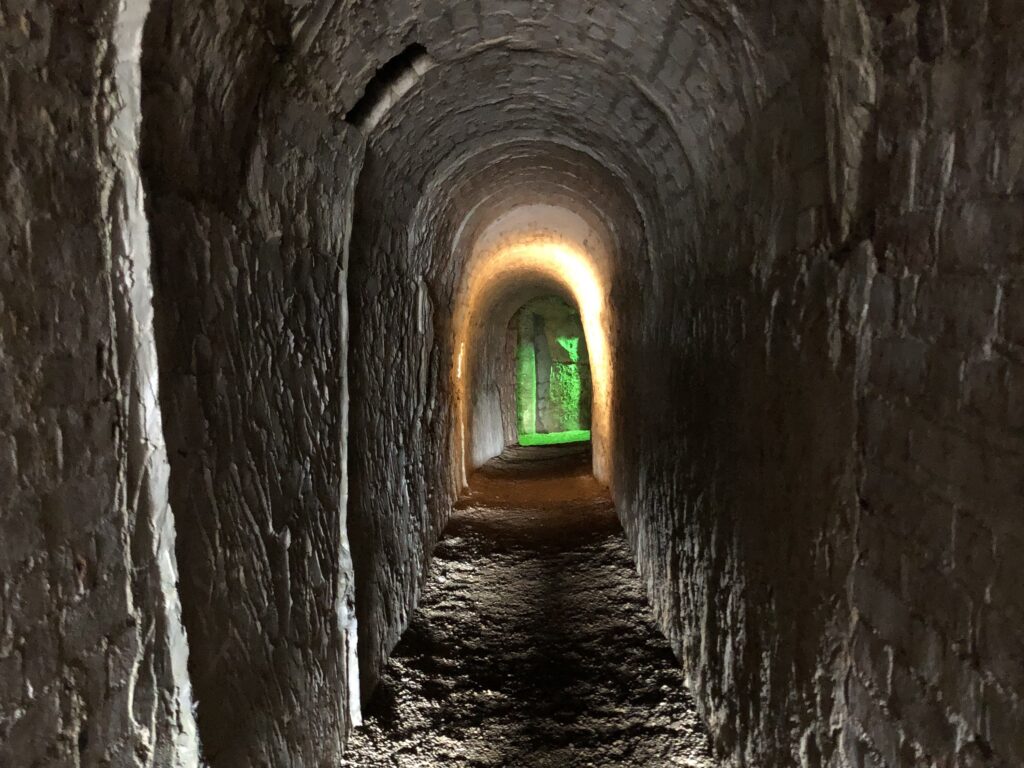
© Curious Archive, 2020
Located in the National Trust’s West Wycombe village in Buckinghamshire, the Hellfire Caves are a peculiar landmark alongside an otherwise idyllic high street. Extending a quarter of a mile into West Wycombe Hill, The Hellfire Caves were dug between 1748 and 1752 for two mundane reasons: the relief of local unemployment and to provide chalk for the construction of a new road. While the Caves themselves are interesting to explore, it’s the Hellfire Club’s rumoured history of devil worship, Black Masses, and other blasphemous activity that attracts attention from curious thrill-seekers and paranormal investigators. But how much of this sinister history is true and how much is century-old gossip?
Philip, Duke of Wharton and the Original Hellfire Club (1718 – 1721)
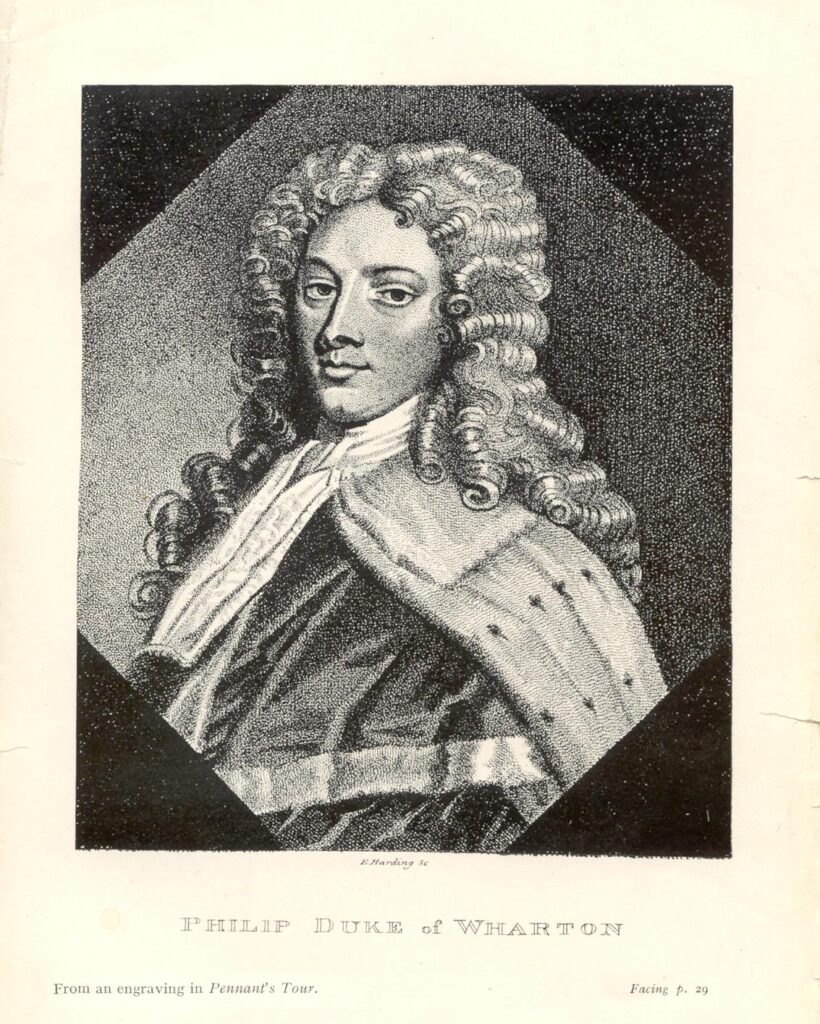
Understanding the history of Hellfire Clubs requires detangling centuries of rumours and speculation. The original Hellfire Club was founded in London in 1718 by prominent English politician and notorious rake Philip, Duke of Wharton. The club’s membership is unknown but likely involved close friends and associates of the Duke including his cousin, the Earl of Lichfield, and the Earl of Hillsborough. In general, Club membership was held by high standing citizens, often politicians.
At this time, blasphemy against Christianity was banned which made the Hellfire Club’s rumoured anti-Christian activities even more shocking and appalling. During their meetings (held on Sundays) the Hellfire Club was said to hold mock religious ceremonies and attend meetings dressed as characters from the Bible. Some say that members even claimed the Devil himself was acting president of the Club.
At this time, blasphemy against Christianity was banned which made the Hellfire Club’s rumoured anti-Christian activities even more shocking and appalling. During their meetings (held on Sundays) the Hellfire Club was said to hold mock religious ceremonies and attend meetings dressed as characters from the Bible. Some say that members even claimed the Devil himself was acting president of the Club.
Whether these activities were done in the name of satire or if they were fabricated by angry critics is unknown. Regardless, the London Hellfire Club disbanded in 1721 after the Duke of Wharton was removed from parliament due to the offensive nature of his club. Unable to stay away from secret societies, The Duke quickly joined freemasonry and the following year celebrated his new position as the Grand Master of England.
Sir Francis Dashwood and the Wycombe Hellfire Club (Mid-18th century – 1762)
The Hellfire Club that occasionally met in the West Wycombe Hellfire Caves was first inaugurated under the name ‘The Knights of St Francis of Wycombe’. Though the group did not originate as a Hellfire Club, the name stuck after rumours claimed The Knights held similar ideologies and rituals as the former Hellfire Club in London. Founded by English politician Sir Francis Dashwood during the mid-eighteenth century, the Club originally met at the George and Vulture in London before moving to permanent headquarters at Medmenham Abbey.
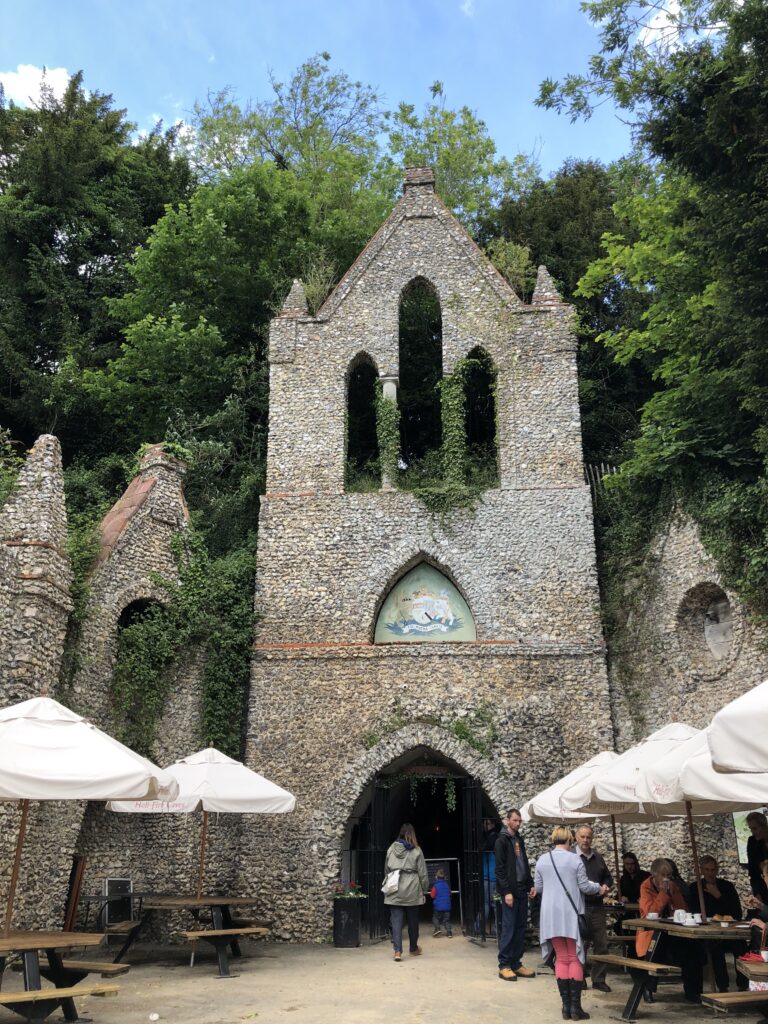
© Curious Archive, 2020
Sir Francis invested a considerable money into the reconstruction of the ruined abbey at Medmenham, located roughly eight miles from West Wycombe. The structure was renovated in the Gothic style and may have been decorated with wall paintings commissioned by Sir Francis. Above the entrance in stained glass was the club’s motto, ‘Fais ce que tu voudrais’ or ‘Do what thou wilt’. This motto was eventually used by infamous English occultist Alistair Crowley (1875-1947) for the development of his spiritual philosophy Thelema.
This is where information on the West Wycombe Hellfire Club gets a bit murky. Secondary sources are often contradictory or based on hearsay and primary sources are unfortunately scarce. This is thanks to Paul Whitehead, the club’s steward and record keeper, spending three days prior to his death burning all the Club’s records. Through his actions, Whitehead has successfully taken most of the Club’s secrets with him to his grave.
What we do know: Sir Francis was responsible for commissioning the construction of the original caves in West Wycombe to employ local workers and complete the previously mentioned roadwork. Hellfire Club meetings were potentially held in the caves during (or after) the time the meetings were being held at Medmenham Abbey. According to some first-hand accounts, these meetings included banqueting, drinking, hired women, poetry, and song. We also have a list of known members from this Hellfire Club, compiled from various letters and other remaining sources. Similar to the original Hellfire Club, the majority of members were politicians and other high standing members of society.
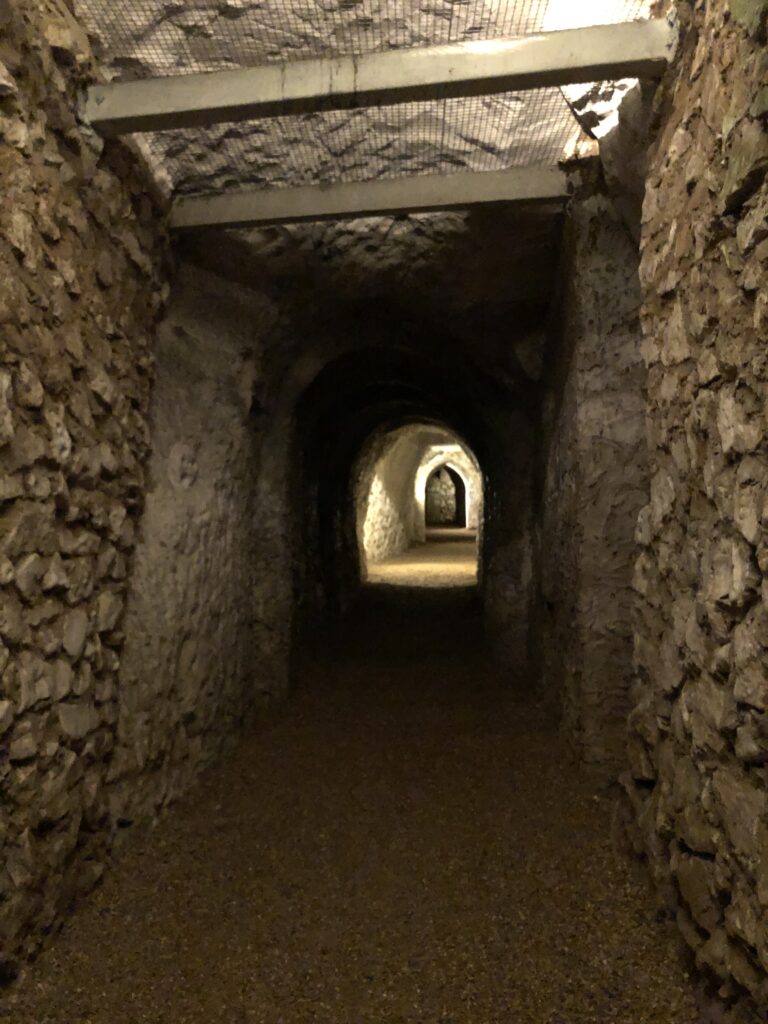
© Curious Archive, 2020
What we don’t know: No one really knows what exactly happened at Hellfire Club meetings. Some popular rumours and speculation include:
- Outside of typical gentleman’s club activities, the meetings also involved ritual on some level. It’s thought that some of these rituals were conducted in the Inner Temple in the Hellfire Cave (entered by crossing the appropriately named River Styx) where only highly ranked members were permitted. More sinister rumours suggest that these rituals included unspecified types of sacrifice, abuse of women, and orgies.
- One type of ritual that may or may not have taken place were Black Masses, a Satanic ceremony based on obscene mockery of the Catholic Mass. Members were also accused of being worshipers of the Devil, a rumour that could be rooted in the original Hellfire Club jokingly stating that the Devil was their leader.
Despite the rumours’ dark appeal, there is no evidence that the Hellfire Club considered themselves to be Devil worshipers or that any reports of ritual, sacrifice, and orgies were true. Dislike for gentleman’s clubs during the eighteenth-century were likely the cause of any hearsay, especially for an organisation that prided itself on secrecy. But some actions of Hellfire Club members certainly played into the public accusations.
An example of this can be found in a peculiar portrait of Sir Francis Dashwood painted by fellow Hellfire Club member William Hogarth. The oil on canvas painting from around 1764 (left) could seemingly pass as a typical rendering of Francis of Assisi, patron saint of animals and Founder of the Franciscan Order. The similarities are obvious when comparing Hogarth’s painting to two other images of St Francis, the first by Cigoli from the late sixteenth-century (centre) and a second earlier example by Giotto from the late thirteenth-century (right).
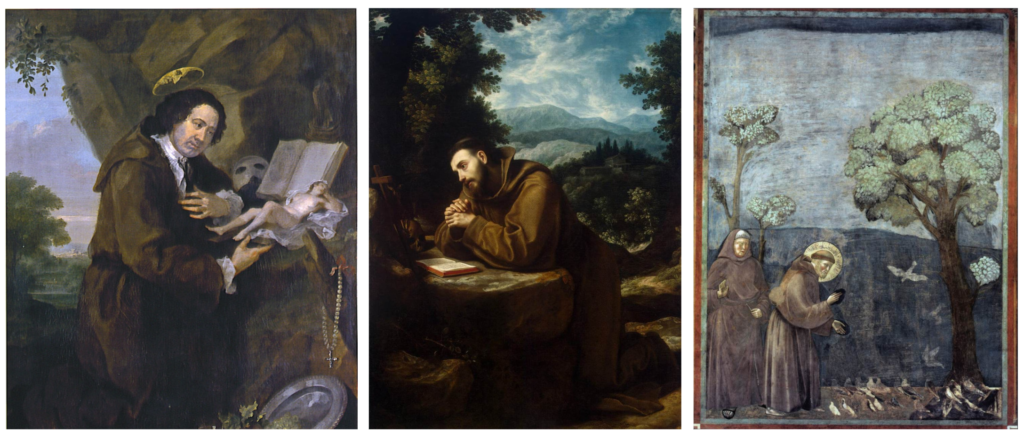
Centre: St Francis of Assisi by Lodovico Cardi (aka Cigoli) (c. 1597-1599, oil on canvas, Hermitage Museum, Saint Petersburg, Russia)
Right: St Francis Preaching to the Birds by Giotto (c.1297-1299, fresco, Basilica of Saint Francis of Assisi, Assisi, Italy)
At first glance, Hogarth’s painting of the leader of the Hellfire Club appears quite harmless. But a few small details hint at the portrait’s true intentions of either playfully poking fun at critiques of the Club or confirming everyone’s bleakest suspicions.
The first interesting detail is Sir Francis’ halo, a symbol typically used in Christian art to depict an individual’s holy status. Closer inspection reveals that this is no ordinary halo, as it contains the face of a man looking down at Sir Francis. The face belongs to fellow Hellfire Club member and friend of St Francis, John Montagu, the Earl of Sandwich.
A second noteworthy detail is the open book in front of Sir Francis on the rocky alter. In similar images of St Francis and other individuals in Christian art, an open book represents The Bible or fragments of holy scripture, especially when a figure in kneeling in front it. However, scholars have determined this is in fact not The Bible, but the erotic novel Elegantiae Latini sermonis by Nicolas Chorier.
Whether this painting was confirmation of blasphemous claims or simply a fun way of acknowledging rumours of their Club’s activities and ideologies is unknown. Either way, rendering the Hellfire Club leader as an important Christian figure reading an erotic novel would have certainly inspired some pearl-clutching from any members of the public that happened upon the image.
Reported Hauntings and Paranormal Investigations
Directly above the Hellfire Caves on West Wycombe Hill sits the Dashwood Mausoleum, a large and impressive structure completed by Sir Francis in 1765. Among the burials of his friends and family, a central pedestal and urn commemorates Sir Francis’ wife, Lady le Despenser. [Image of Mausoleum] Before his death, Hellfire Club Steward Paul Whitehead is said to have left £50 to Sir Francis to purchase an urn for his heart and a spot in the Dashwood Mausoleum. In 1829 Whitehead’s heart was stolen by an Australian solider and the urn (which was then presumably empty) was placed in the Caves for safekeeping. The ghost of Paul Whitehead is said to haunt the tunnels of the Hellfire Caves eternally searching for his missing heart.
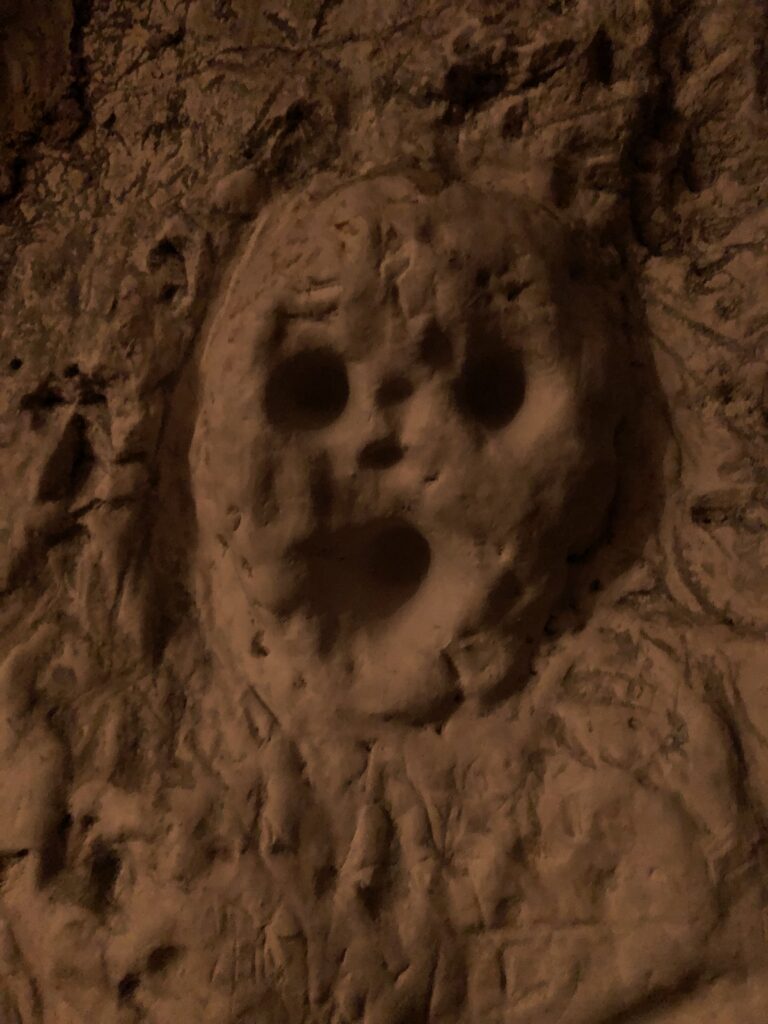
© Curious Archive, 2020
The ghost of Sukie, or ‘The White Lady’, has a sadder tale associated with her death. While working at the nearby George and Dragon tavern during the nineteenth-century, Sukie was lured into the Caves by local men who were jealous of her potential marriage to a visiting aristocrat. Believing she was eloping with her future husband inside the caves, Sukie wore her wedding gown to the meeting, giving her ghost the nickname The White Lady. When she entered the caves three local men awaited her and after being struck numerous times with stones, Suki later passed away from her injuries. Her ghost is now said to haunt the Caves, the location of the betrayal that lead to her murder.
Notoriety of the Hellfire Cave hauntings attracted the attention of the popular ghost hunting show Most Haunted which filmed an over-night vigil at the Caves for an episode in December 2003. Presenter Yvette Fielding and Medium Derek Achora were among those who spent the night and reported numerous paranormal experiences including the sounds of crying babies and stones hitting gates.
Outside of witnessing unexplained light orbs, the Medium claimed to sense a young girl dressed in white (likely Sukie) as well as numerous women dressed in nun’s habits. A plaque within the Hellfire Caves dedicated to the filming of the Most Haunted episode mentions that ‘Ladies of the Night’ were said to have worn similar attire as a disguise while entertaining members of the Hellfire Club.
Visiting Today

© Curious Archive, 2020
Today, The Hellfire Caves are open to the public for a small fee and discounted rates for National Trust members. Visits are self-guided, and signs are located throughout the Caves detailing their history, information on the Hellfire Club, and reported hauntings. Red and green mood lighting as well as wax statues dressed in period attire decorate the interior, adding a bit of harmless kitsch to the experience. Unsurprisingly, the Caves are used for various Halloween events including an annual haunted house styled Fright Night.
Visitors to the Hellfire Caves are in close proximity to a number of other attractions in the immediate area including the historic West Wycombe High Street (complete with an old fashion candy shop), the George and Dragon tavern, West Wycombe Park, and St Lawrence’s Church and the Dashwood Mausoleum located directly above the caves on West Wycombe Hill.
Conclusion
Attempting to construct a historically accurate narrative of the Hellfire Clubs, especially in relation to Sir Francis Dashwood and the Hellfire Caves, proves a difficult and confusing process. While some information can be confirmed through historical records, the burning of specific Hellfire records by Paul Whitehead makes it near impossible to gain a proper understanding the events that occurred at Club meetings and whether or not they were sinister in nature, or simply the luxurious partying of a group of high society friends.
Sources and Additional Reading:
This admittedly only scratches the surface of the strange history of Hellfire Clubs throughout the UK and Ireland. To dive further down the rabbit hole, check out the following websites:
